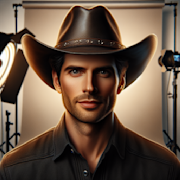The Lasting Impact of Classic Movie Sound Effects

Classic movie sound effects have played an instrumental role in shaping the way audiences experience films. From iconic sounds like the roar of Godzilla to the swoosh of a lightsaber, these effects have become ingrained in pop culture and continue to captivate audiences today. In this blog post, we will explore the lasting impact of these classic movie sound effects and how they have helped create some of the most memorable moments in cinematic history.
The Evolution of Sound Effects in Film
Sound effects have been used in films since the early days of cinema. In silent films, sound effects were created in real-time by a Foley artist who would perform various actions to mimic sounds that would accompany the visuals on screen. As technology advanced, sound effects became more sophisticated, with the introduction of recorded sound and the use of special effects to create otherworldly sounds.
One of the earliest examples of iconic sound effects in film can be traced back to the work of legendary filmmaker Alfred Hitchcock. In his 1960 classic “Psycho,” Hitchcock used a combination of music and sound effects to create tension and suspense in key scenes, most notably the infamous shower scene. The sound of the knife stabbing into the body was achieved by plunging a knife into a melon, a simple yet effective technique that left a lasting impact on audiences.
The Art of Foley
Foley artists play a crucial role in creating sound effects for films. These skilled individuals use a variety of props and techniques to recreate sounds that are synchronized with the action on screen. From footsteps to door creaks, Foley artists are responsible for bringing films to life through the use of sound effects.
One of the most famous Foley artists in Hollywood history is Jack Foley, who pioneered many of the techniques still used in film today. Foley’s work on classic films like “Spartacus” and “The Birds” helped elevate the art of sound effects to new heights, earning him a well-deserved reputation as a master of his craft.
Iconic Sound Effects in Film
Over the years, certain sound effects have become synonymous with specific films or genres. For example, the whirring of R2-D2’s servos in the “Star Wars” franchise or the eerie theme music from “Jaws” instantly evoke memories of these classic films. These sounds have become so ingrained in popular culture that they are instantly recognizable to audiences of all ages.
Another iconic sound effect that has stood the test of time is the Wilhelm scream. This distinctive scream has been used in over 400 films since it was first recorded in the 1951 film “Distant Drums.” The Wilhelm scream has become a beloved inside joke among filmmakers, with directors like George Lucas and Peter Jackson including it as a nod to its storied history in cinema.
The Future of Sound Effects in Film
As technology continues to advance, so too does the art of sound effects in film. With the rise of CGI and virtual reality, filmmakers now have more tools at their disposal than ever before to create immersive soundscapes that enhance the viewing experience. Despite these advancements, classic sound effects still hold a special place in the hearts of moviegoers around the world.
In conclusion, the lasting impact of classic movie sound effects cannot be overstated. From Hitchcock’s innovative use of sound in “Psycho” to the iconic sounds of “Star Wars” and “Jaws,” these effects have become an integral part of the filmmaking process. As technology evolves, so too will the art of sound effects, but the timeless appeal of these classic sounds will continue to resonate with audiences for generations to come.

Alberto Miller
Movie Fanatic
More From Classics Authority Movies

Movie
Spectacle and Simplicity: The Art of Buster Keaton's Silent Comedy

Movie
2001: A Space Odyssey (1968)

Movie
Behind the Scenes: The Untold Stories of Classic Movie Production

Movie
Goodfellas (1990)

Movie
Classic Movies that Tackled Social Issues Ahead of Their Time

Movie
Cinematic Landscapes: The Use of Nature in Classic Film Settings





